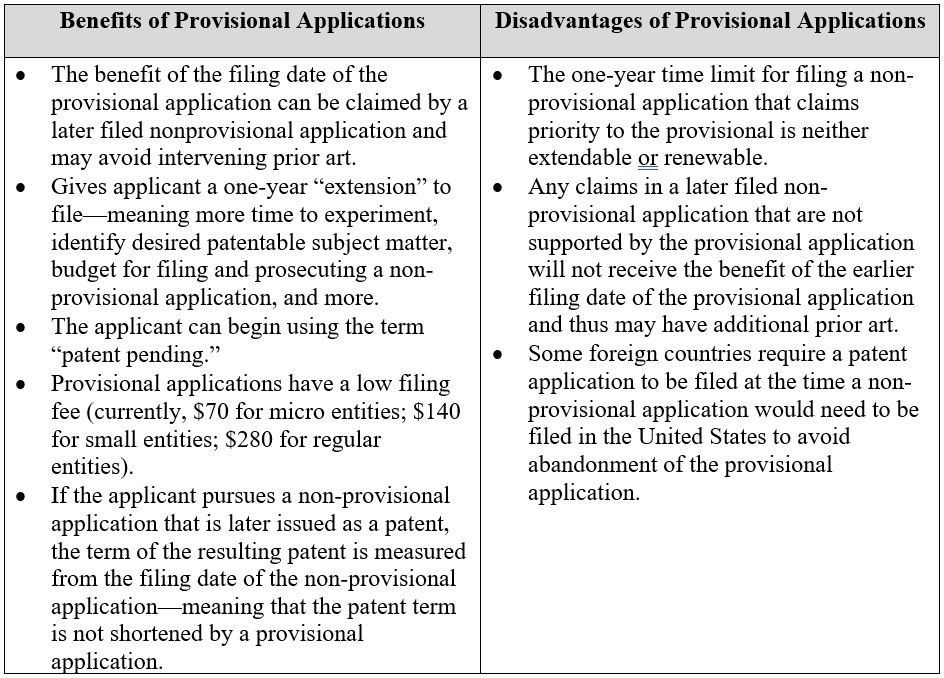Over the past several months, we have seen many companies react quickly and take action to stop the spread of COVID-19 — distilleries are producing hand sanitizer, fashion brands are manufacturing surgical masks and personal protective equipment, and tech companies are developing technology to trace and track the spread of the coronavirus.
Companies are sharing their technology with competitors to speed up research and develop lifesaving solutions to fight the virus. The sense of duty and community we are seeing in industry during these unprecedented times is inspiring.
After we beat the pandemic, we will need these same companies to focus their attention on stimulating the economy and helping us bounce back. For some companies, this will mean utilizing the innovations that they created during the pandemic.
Today, a company's ability to capitalize from its inventions is frequently tied to its patent portfolio. Filing a patent application is likely not at the top of most companies' list of priorities right now, especially companies operating with limited resources. It's a good idea for companies to seek counsel from the very beginning of the patent application process.
Although that may not seem feasible at the moment, there are certain relatively inexpensive steps that companies can take, even on their own if needed, to preserve potential patent rights, such as filing a provisional patent application. In this article, we answer three common questions relating to provisional applications.
What is a provisional application?
A provisional application acts as a placeholder that allows an applicant to secure a filing date and postpone the costs of filing and prosecuting a nonprovisional patent application for up to one year. The first effective filing date of claims in a patent application is important because it is used to determine the date before which disclosures can be considered to be prior art.
Once filed, a provisional application sits at the U.S. Patent and Trademark Office as an unexamined application for up to a year, giving the applicant time to determine if their invention is commercially viable and the breadth of desired patent protection.
It is important to note that provisional applications are not published and will not be publicly disclosed, unless cited in a later published application or patent. Furthermore, a provisional application can never be issued as a patent. Rather, an applicant must file a non-provisional application in order to receive a patent.
Of course, what is best for an applicant will depend on their unique situation, and a provisional application may not be the right tool for all cases. Some of the potential benefits and disadvantages of provisional applications are outlined below. Additional information regarding provisional applications is available on the USPTO's website.1

What do you need to know before you file a provisional application?
In the U.S., the patent system was put in place to incentivize inventors to share their inventions with the public and advance technology in exchange for a right to exclude others from using the invention for a limited time. So, a patent application must do just that — share the invention.
This means that the filing must disclose everything a person of ordinary skill in the field of the invention would need to know to make and use the invention. It's important for applicants to remember this when preparing a provisional application.
A few additional pointers to keep in mind:
1. Be thorough. Applicants should include detailed information explaining their invention in their provisional application. Remember, a provisional application is a placeholder that gives the applicant a filing date for the information that is included in the application. This generally means that the benefit of the filing date of a provisional application will not be provided to elements of the invention that were not disclosed in that application.
2. Carefully consider the description of the invention. Applicants should draft their provisional applications considering suitable options and alternatives for components. For example, if an applicant's provisional application uniquely and repetitively describes a titanium widget, a competitor could try to avoid infringement by manufacturing an aluminum widget. A provisional application that describes a metal widget and recites a list of suitable metals could provide broader protection.
3. Consider including illustrative aids. A picture can be worth a thousand words. Appropriate figures, drawings, tables, graphs or presentation slides that may be helpful in explaining the invention and its innovative nature to someone of ordinary skill in the art can be useful.
How is a provisional application filed?
The USPTO requires that a cover sheet be filed along with the application and that the appropriate filing fee be paid at the time of filing.2 Applications can be filed online through the USPTO's electronic filing system or by mail (which requires payment of an additional fee).3
If an applicant intends to file without the assistance of a qualified patent agent or attorney, the USPTO offers a pro se assistance program that may be able to provide helpful information.4
Footnotes
1. Provisional Application for Patent, U.S. Patent and Trademark Office, https://www.uspto.gov/patents-getting-started/patent-basics/types-patent-applications/provisional-application-patent (last visited Apr. 28, 2020).
2. Provisional Application for Patent Coversheet, U.S. Patent and Trademark Office, https://www.uspto.gov/sites/default/files/documents/sb0016.pdf (last visited Apr. 28, 2020).
3. U.S. Patent and Trademark Office, EFS-Web Portal, https://www.uspto.gov/patents-application-process/file-online (last visited Apr. 28, 2020).
4. Filing a Patent Application on Your Own, U.S. Patent and Trademark Office, https://www.uspto.gov/patents-getting-started/using-legal-services/pro-se-assistance-program (last visited Apr. 28, 2020).
Originally published by Law360, 1st of May, 2020
The content of this article is intended to provide a general guide to the subject matter. Specialist advice should be sought about your specific circumstances.
